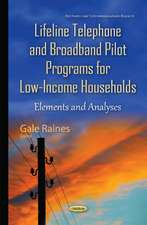Radar Principles for the Non-Specialist
Autor John C. Toomayen Limba Engleză Paperback – 15 mar 2012
Preț: 579.99 lei
Preț vechi: 682.34 lei
-15% Nou
Puncte Express: 870
Preț estimativ în valută:
110.98€ • 116.49$ • 92.12£
110.98€ • 116.49$ • 92.12£
Carte tipărită la comandă
Livrare economică 11-25 aprilie
Preluare comenzi: 021 569.72.76
Specificații
ISBN-13: 9789401169875
ISBN-10: 940116987X
Pagini: 228
Ilustrații: XVIII, 206 p.
Dimensiuni: 152 x 229 x 12 mm
Greutate: 0.31 kg
Ediția:Softcover reprint of the original 1st ed. 1989
Editura: SPRINGER NETHERLANDS
Colecția Springer
Locul publicării:Dordrecht, Netherlands
ISBN-10: 940116987X
Pagini: 228
Ilustrații: XVIII, 206 p.
Dimensiuni: 152 x 229 x 12 mm
Greutate: 0.31 kg
Ediția:Softcover reprint of the original 1st ed. 1989
Editura: SPRINGER NETHERLANDS
Colecția Springer
Locul publicării:Dordrecht, Netherlands
Public țintă
ResearchCuprins
1 Elementary Electromagnetics and the Radar Range Equation.- Radio Waves.- A Simple Radar.- The Radar Range Equation.- Surveillance.- Tracking.- Exercises.- References.- 2 Antennas.- A Parabolic Reflector.- The Antenna Pattern.- The Interferometer.- Finding Sidelobe Levels.- Array Radars.- Element Spacing.- Array Gain.- Array Thinning.- Array Design Considerations.- Exercises.- References.- 3 Detection and Tracking.- The Problem of Detection.- Noise Distributions.- Signal-to-Noise Ratio.- Designing Thresholds.- Some Detection Techniques.- Tracking.- Exercises.- References.- 4 Radar Cross Section.- RCS of a Sphere.- RCSs of Simple Objects.- Polarization.- Chaff Characteristics.- Diffuse Targets and Clutter.- Radar Signatures.- Exercises.- References.- 5 Waveforms and Signal Processing.- Characteristics of the Simple Pulse.- Range Measurement.- Doppler Measurements.- Pulse Compression.- Time Sidelobes.- Pulse Burst Waveforms.- Ambiguity Functions.- Signal Processing.- Exercises.- References.- 6 Electronic Countermeasures (ECM).- Mainbeam Jamming.- Sidelobe Jamming.- Low-Probability-of-Intercept Radar (LPIR).- Other Jamming Techniques.- Passive ECM.- Exercises.- References.- 7 Systems Applications.- Over-the-Horizon Radars.- Radar Altimeters.- Ionospheric Radars.- Advanced Technology Radars.- Pulse-Doppler Radars.- Synthetic Aperture Radar.- Laser Radars.- Exercises.- References.- 8 Loose Ends of Radar Lore.- Radar Horizon.- Properties of the Medium.- Ionosphere.- Troposphere.- Far Field of an Antenna.- Convenient Radar Rules of Thumb.- Exercises.- References.- 9 Radar Potentials and Limitations.- Surveillance.- Navigation.- Signatures.- Science.- Summary.- Appendix 1 Conversion to Decibels.- Appendix 2 The Electromagnetic Spectrum.- Appendix 3 Fourier Series and Transforms.- Fourier Series.- Fourier Transforms.- Appendix 4 Answers to Exercises.- Appendix 5 Glossary.











